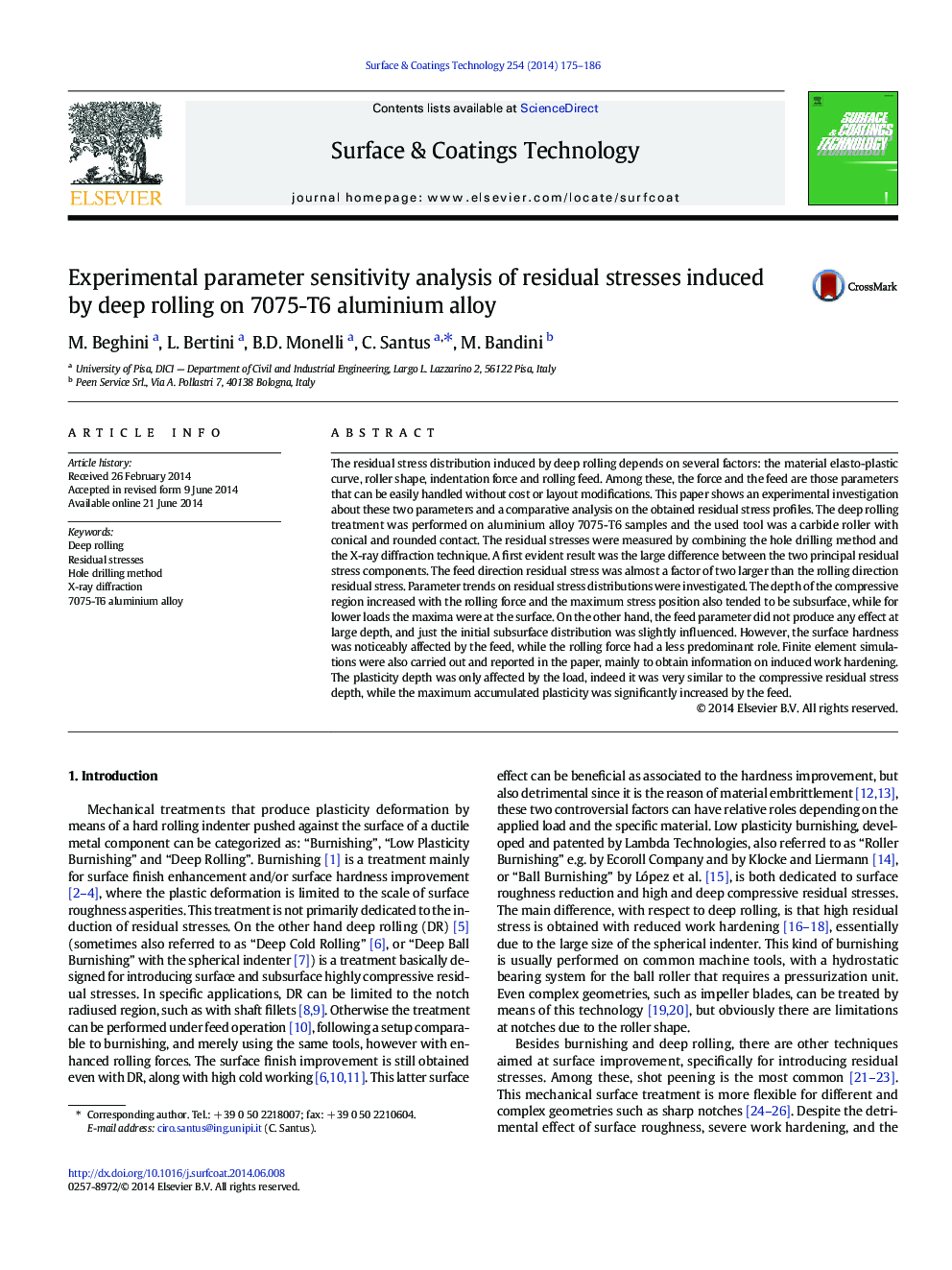| Article ID | Journal | Published Year | Pages | File Type |
|---|---|---|---|---|
| 8027558 | Surface and Coatings Technology | 2014 | 12 Pages |
Abstract
The residual stress distribution induced by deep rolling depends on several factors: the material elasto-plastic curve, roller shape, indentation force and rolling feed. Among these, the force and the feed are those parameters that can be easily handled without cost or layout modifications. This paper shows an experimental investigation about these two parameters and a comparative analysis on the obtained residual stress profiles. The deep rolling treatment was performed on aluminium alloy 7075-T6 samples and the used tool was a carbide roller with conical and rounded contact. The residual stresses were measured by combining the hole drilling method and the X-ray diffraction technique. A first evident result was the large difference between the two principal residual stress components. The feed direction residual stress was almost a factor of two larger than the rolling direction residual stress. Parameter trends on residual stress distributions were investigated. The depth of the compressive region increased with the rolling force and the maximum stress position also tended to be subsurface, while for lower loads the maxima were at the surface. On the other hand, the feed parameter did not produce any effect at large depth, and just the initial subsurface distribution was slightly influenced. However, the surface hardness was noticeably affected by the feed, while the rolling force had a less predominant role. Finite element simulations were also carried out and reported in the paper, mainly to obtain information on induced work hardening. The plasticity depth was only affected by the load, indeed it was very similar to the compressive residual stress depth, while the maximum accumulated plasticity was significantly increased by the feed.
Related Topics
Physical Sciences and Engineering
Materials Science
Nanotechnology
Authors
M. Beghini, L. Bertini, B.D. Monelli, C. Santus, M. Bandini,
